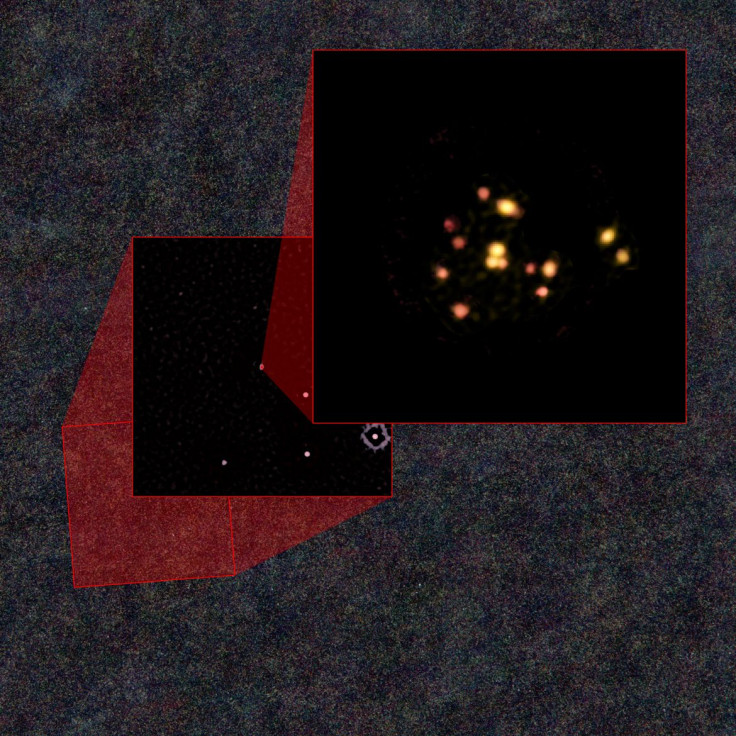Galactic Megamerger: Young, Starbusting Galaxies From Early Universe Spotted Colliding

An international team of astronomers has spotted an impending galactic megamerger from the early universe, one in which fourteen young, star busting galaxies are about to collide to form the core of one of the most massive objects in the known universe — a galactic cluster.
The massive cosmic pileup was spotted when astronomers using the Atacama Large Millimeter/submillimeter Array, aka ALMA telescope, peered into the depths of the cosmos to "look back" in time.
Depending on the distance between Earth and a distant space object, light can take millions or even billions of years to reach us. Meaning, what we are seeing right now is actually what or the object that appeared several billion years ago.
In this case, the megamerger, officially dubbed SPT2349-56, is located some 12.4 billion light-years away from Earth. This means the astronomers looked across 90 percent of the observable universe (13.8 billion years old at present) to see how our cosmos appeared when it was just 1.4 billion years old. They saw a faint light back in 2010 and then followed up with the Atacama Pathfinder Experiment (APEX) and ALMA observations to uncover 14 distant galaxies.
Each galaxy participating in the dense collision hosts an incredibly active star-forming region. Here, the rate of star-birth is at least a thousand times faster than what has been theorized for the Milky Way. More interestingly, they all were spotted in a region of space which was just three times the size of our galaxy.
The evolution of galaxy clusters
Eventually, these galaxies will merge to form a cluster that would be just as big as galaxy clusters observed in the present-day universe. Galaxy clusters are one of the biggest objects in the known universe. They can be as massive as a million billion Suns and can hold as many as a thousand galaxies with dark matter, black holes, hot ionized gas, and what not.
"Having caught a massive galaxy cluster in throes of formation is spectacular in and of itself," Scott Chapman, an astrophysicist at Dalhousie University in Halifax, Canada, said in a statement. "But, the fact that this is happening so early in the history of the universe poses a formidable challenge to our present-day understanding of the way structures form in the universe." Previous theories and models suggested massive galactic assemblies, like this one, take billions of years to get this big and form a cluster.
That said, this latest observation could help scientists understand the very first stages that led to the formation of the first galaxy clusters soon after the Big Bang. "ALMA gave us, for the first time, a clear starting point to predict the evolution of a galaxy cluster. Over time, the 14 galaxies we observed will stop forming stars and will collide and coalesce into a single gigantic galaxy," Chapman added. They even predicted how the observed galaxies will evolve using sophisticated computer simulations.
The study, titled “A massive core for a cluster of galaxies at a redshift of 4.3,” was published April 25 in the journal Nature.

© Copyright IBTimes 2025. All rights reserved.




















